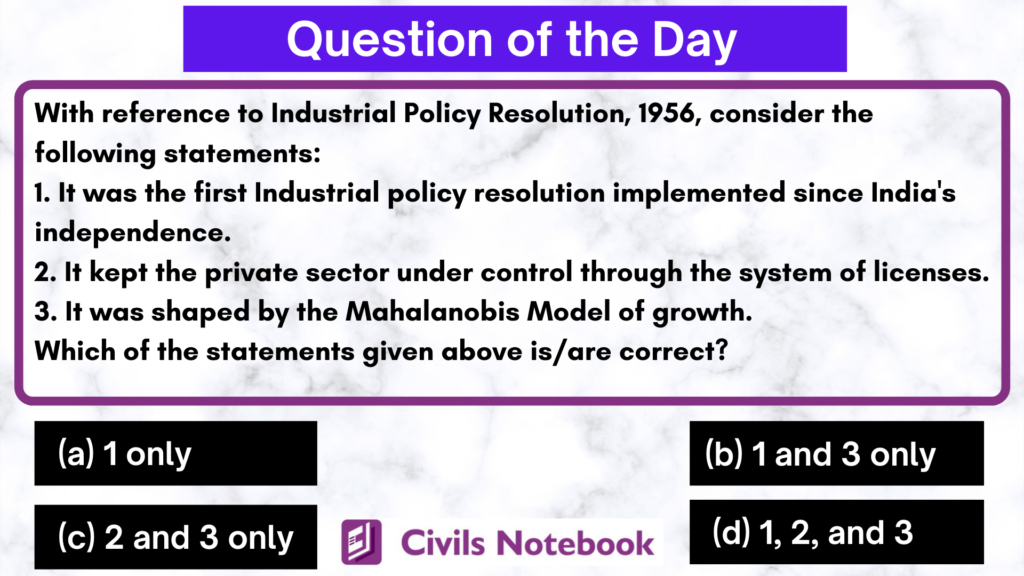
Explanation:
The first Industrial Policy Resolution was announced in 1948 which laid down broad contours of the strategy of industrial development. It was based on the Bombay plan designed in the pre independence era. The Resolution was somewhat broad in its scope and direction as the Constitution had not taken its full shape and the necessary legal framework was also not put in place. An important distinction was made among industries to be kept under the exclusive ownership of Government, i.e., the
public sector, those reserved for private sector and the joint sector. Hence statement 1 is not correct.
• Subsequently, the Indian Constitution was adopted in January 1950, the Planning Commission was constituted in March 1950 and the Industrial (Department and Regulation) Act (IDR Act) was enacted in
1951 with the objective of empowering the Government to take necessary steps to regulate the pattern of industrial development through licensing. This paved the way for the Industrial Policy Resolution of 1956,
which was the first comprehensive statement on the strategy for industrial development in India.
• The Industrial Policy Resolution – 1956 was shaped by the Mahalanobis Model of growth, which suggested that emphasis on heavy industries would lead the economy towards a long term higher growth path. Hence statement 3 is correct.
• This resolution formed the basis of the Second Five Year Plan, the plan which tried to build the basis for a socialist pattern of society. This resolution classified industries into three categories. The first category
comprised industries which would be exclusively owned by the state; the second category consisted of industries in which the private sector could supplement the efforts of the state sector, with the state taking the sole responsibility for starting new units; the third category consisted of the remaining industries which were to be in the private sector.
• Although there was a category of industries left to the private sector, the sector was kept under state control through a system of licenses. No new industry was allowed unless a license was obtained from the government. This policy was used for promoting industry in backward regions; it was easier to obtain a license if the industrial unit was established in an economically backward area. Even an existing industry had to obtain a license for expanding output or for diversifying production (producing a new variety of goods). This was meant to ensure that the quantity of goods produced was not more than what the economy required. Hence statement 2 is correct.
Hence Option C is correct.


